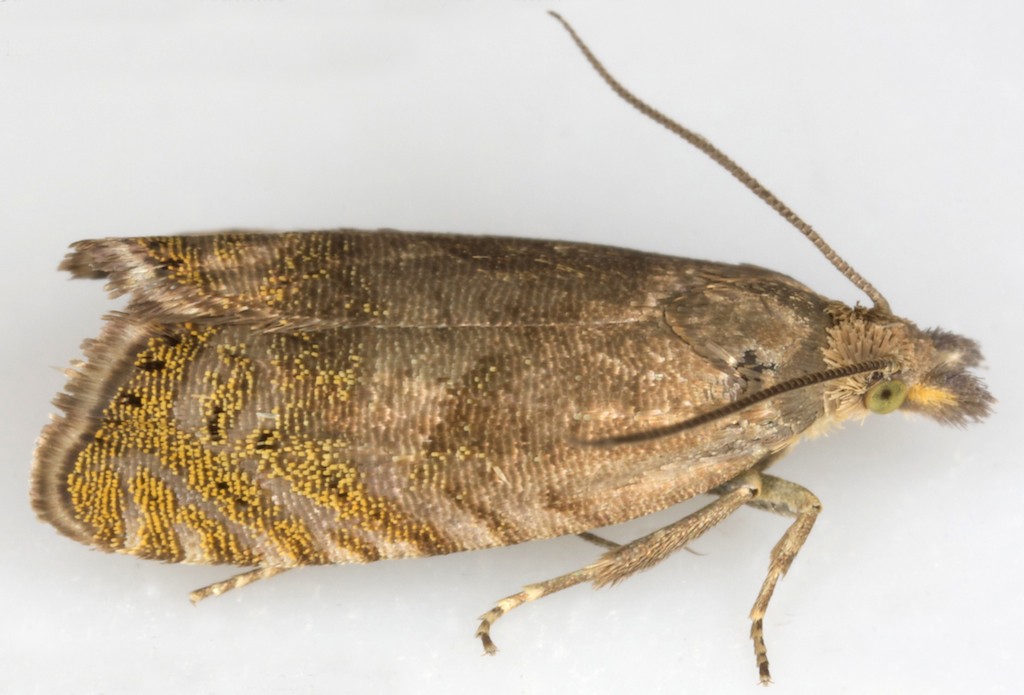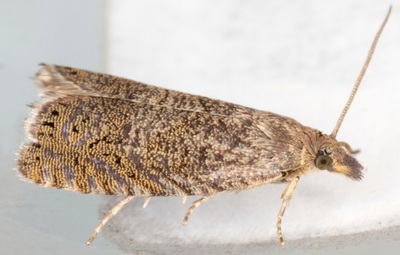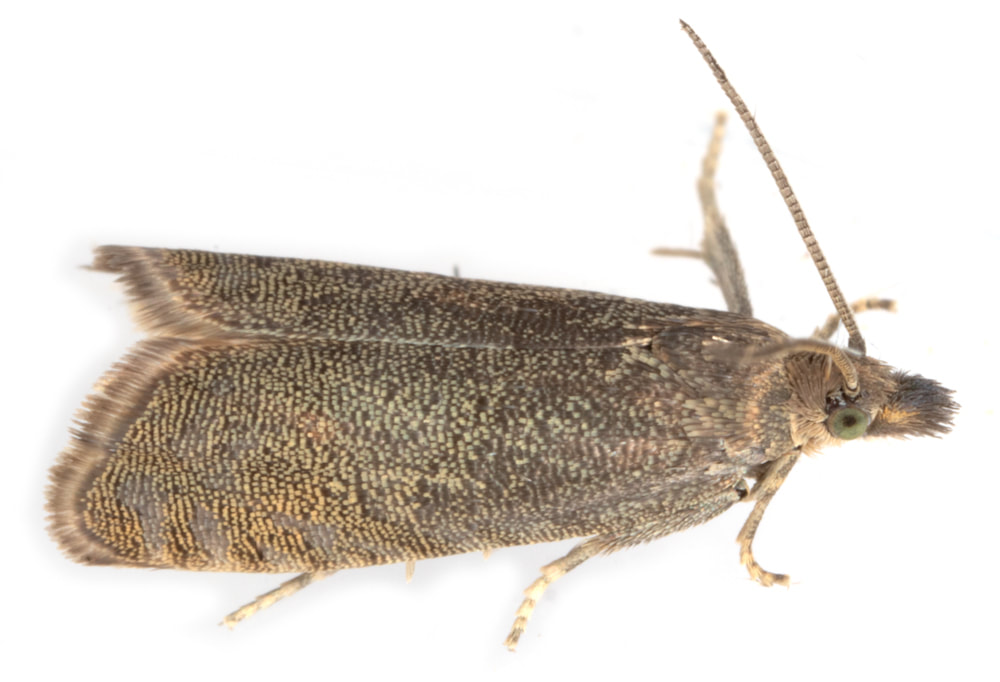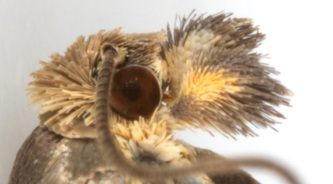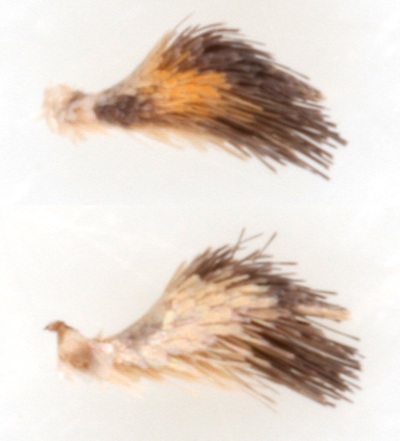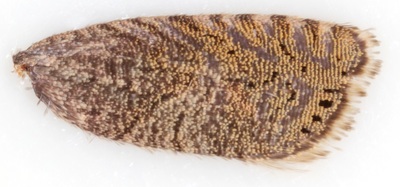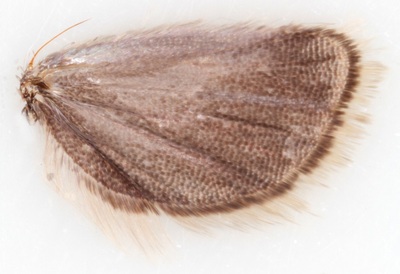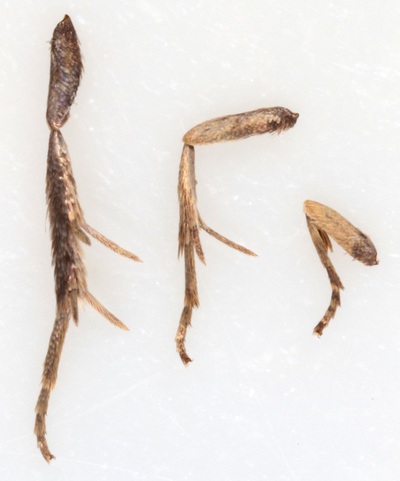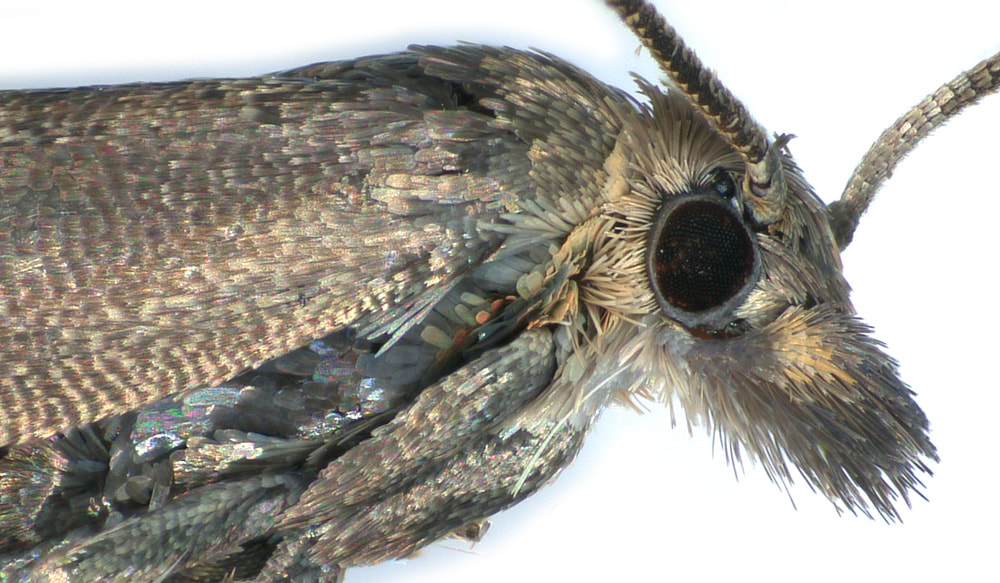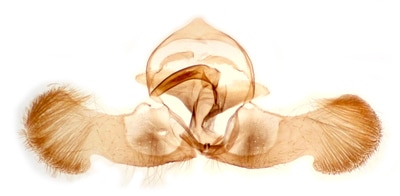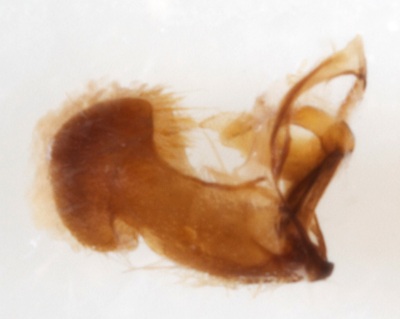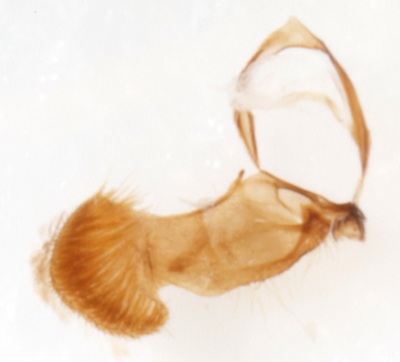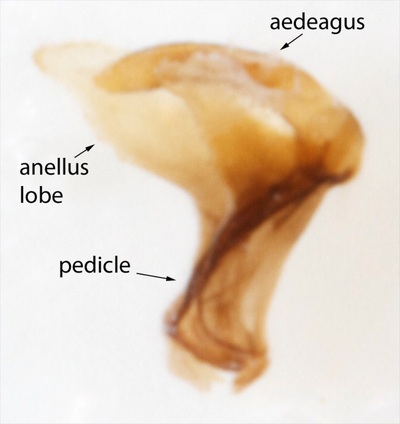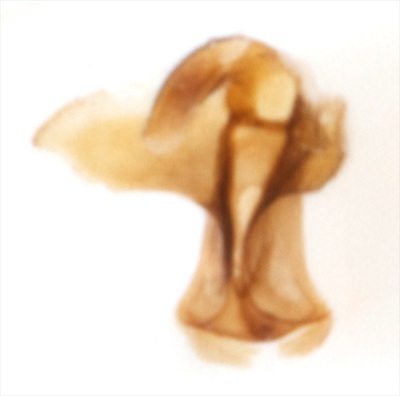49.309 Dichrorampha plumbana (Lead-coloured Daisy Moth)
ws: 12-14mm; May-Jun; yarrow (Achillea millefolium), ox-eye daisy (Leucanthemum vulgare); local throughout GB
Synonym: Lipoptycha plumbana (Pierce & Metcalfe)
Synonym: Lipoptycha plumbana (Pierce & Metcalfe)
ID: D.plumbana/sedatana/aeratana are very similar and require genital examination to identify. D.sedetana/aeratana average larger (ws 12-16mm) than D.plumbana such that specimens with fw 7mm or more should not be D.plumbana. D.sedatana flies later (Jun-Jul) than D.aeratana/plumbana such that specimens flying in July should be D.sedatana. D.sedatana has the pale yellow irroration extending to the base of the wing whereas in D.plumbana/aeratana the basal third is largely devoid of yellow colour.
Male genitalia: Pierce and Metcalfe distinguish the 3 species, D.plumbana/sedatana/aeratana, as being sufficiently differentiated to place them in a separate genus (P&M refer to the two genera as Hemimene and Lipotycha, and to this pair of genera as both 'Dichroramphas' and 'Lypotychidii'). The differentiating feature is the presence of large spatulate anellus lobes in 'Lipotycha' and their absence in 'Hemimene'.
The male genitalia are illustrated and described by P&M (unreliable*), BTM (not very reliable), Sterling and Parsons (more helpful) and are shown at Dissection Group.
1. Aedeagus: D.plumbana - tapered without teeth; D.sedatana - 2 tiny dorsal subapical teeth; D.aeratana - 1 tiny dorsal subapical tooth
2. Annelus lobes: D.plumbana/sedatana - very weakly scobinate; D.aeratana - strongly scobinate
S&P also refer to a difference in the shape of the annelus lobes being more tapered ('triangular') from base to apex in D.plumbana/sedatana
3. Emargination of ventral margin of valva: D.plumbana/sedatana - narrow; D.aeratana - broad
BTM also emphaises that D.plumbana has a narrower cucullus than in D.sedatana/aeratana and S&P mention that the cucullus is slightly smaller in D.plumbana. The images at Dissection Group suggest that this difference is sufficiently indistinct that it would be unreliable - it is certainly not nearly as apparent as the illustrations in BTM (p304) would suggest.
* (P&M differentiate a further species L.torrana and confusion reigns in any further attempt to differentiate the species from this source: P&Ms male L.torrana is D.plumbana, their female L.aeratana is D.plumbana, their female L.torrana is D.aeratana and their female L,plumbana is D.aeratana - which leaves their male L.plumbana as unmatched).
Male genitalia: Pierce and Metcalfe distinguish the 3 species, D.plumbana/sedatana/aeratana, as being sufficiently differentiated to place them in a separate genus (P&M refer to the two genera as Hemimene and Lipotycha, and to this pair of genera as both 'Dichroramphas' and 'Lypotychidii'). The differentiating feature is the presence of large spatulate anellus lobes in 'Lipotycha' and their absence in 'Hemimene'.
The male genitalia are illustrated and described by P&M (unreliable*), BTM (not very reliable), Sterling and Parsons (more helpful) and are shown at Dissection Group.
1. Aedeagus: D.plumbana - tapered without teeth; D.sedatana - 2 tiny dorsal subapical teeth; D.aeratana - 1 tiny dorsal subapical tooth
2. Annelus lobes: D.plumbana/sedatana - very weakly scobinate; D.aeratana - strongly scobinate
S&P also refer to a difference in the shape of the annelus lobes being more tapered ('triangular') from base to apex in D.plumbana/sedatana
3. Emargination of ventral margin of valva: D.plumbana/sedatana - narrow; D.aeratana - broad
BTM also emphaises that D.plumbana has a narrower cucullus than in D.sedatana/aeratana and S&P mention that the cucullus is slightly smaller in D.plumbana. The images at Dissection Group suggest that this difference is sufficiently indistinct that it would be unreliable - it is certainly not nearly as apparent as the illustrations in BTM (p304) would suggest.
* (P&M differentiate a further species L.torrana and confusion reigns in any further attempt to differentiate the species from this source: P&Ms male L.torrana is D.plumbana, their female L.aeratana is D.plumbana, their female L.torrana is D.aeratana and their female L,plumbana is D.aeratana - which leaves their male L.plumbana as unmatched).
§1 Foulness, Essex; 08/06/2009; male; fw 6.0mm
§2 St Lawrence, Isle of Wight; 31/05/2014; male; fw 6.2mm
§3 Cranwich Heath, Norfolk; 24/05/2016; male; fw 6.0mm
§4 Corrour, Inverness-shire; 18/06/2021; male; fw 5.7mm; netted by day (gen.det.)
All images © Chris Lewis
§2 St Lawrence, Isle of Wight; 31/05/2014; male; fw 6.2mm
§3 Cranwich Heath, Norfolk; 24/05/2016; male; fw 6.0mm
§4 Corrour, Inverness-shire; 18/06/2021; male; fw 5.7mm; netted by day (gen.det.)
All images © Chris Lewis
Page published 11/02/2013 (§1) | §2 added 27/12/2014 | §3 added 06/02/2017 | §4 added 02/09/2021
